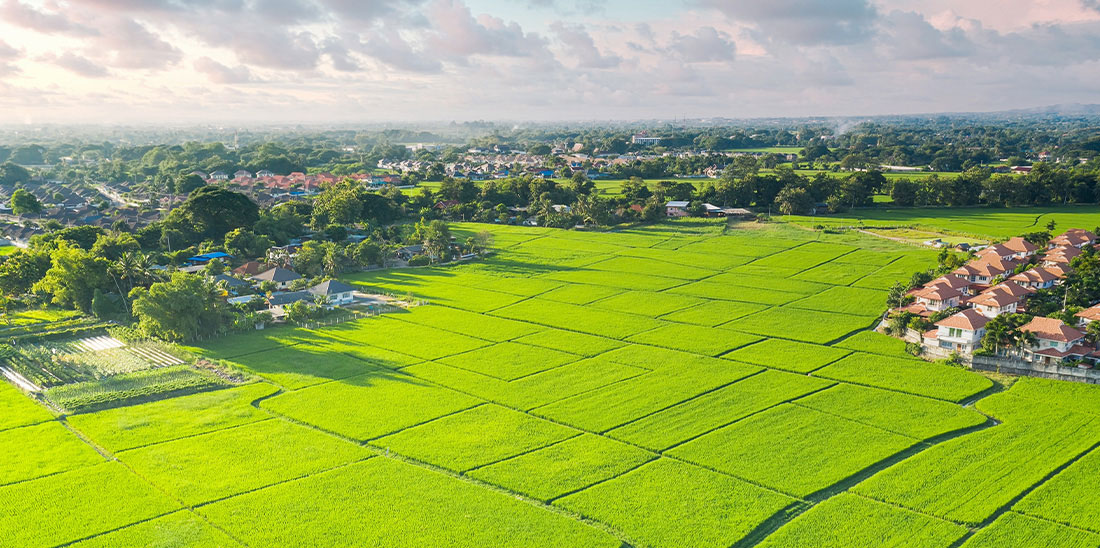
Land banking is a real estate investment strategy focused on acquiring undeveloped land in areas expected to grow. It’s not about building today—it’s about securing tomorrow’s opportunity. At its core, land banking involves identifying land in the path of development, purchasing or controlling it early, and holding it until demand and timing make it ready for sale, builder handoff, or entitlement.
This strategy has been used for decades by experienced investors, institutional funds, and now, increasingly, by individuals and firms who understand the value of positioning early in the real estate cycle.
The Core Idea: Buy Before the Market Arrives
Land banking is built on foresight. It’s about recognizing where growth is going—not where it’s already happened. Investors target regions with strong economic indicators: population growth, new infrastructure projects, regional employment hubs, and increasing demand for housing.
Rather than waiting for development to be shovel-ready or vertical construction to begin, land bankers look upstream in the value chain. They acquire land while it’s still unentitled or pre-development, and then either hold it passively or work through entitlements and planning processes to prepare it for builder takeout.
This approach doesn’t require managing buildings, leasing tenants, or overseeing property maintenance. Instead, it’s about strategic entry and smart positioning.
Why It Matters Now
As real estate markets mature and land becomes more constrained—especially in high-demand states like Texas—access to well-located, developable land is increasingly competitive. Builders need future lots but are shifting toward asset-light strategies. They prefer not to tie up capital in raw land but instead work with trusted land banking partners who can hold, entitle, and deliver land when it’s needed.
Land banking supports this shift. It fills a critical role in the development timeline—one that is gaining importance as cities face housing shortages, infrastructure challenges, and rezoning complexity.
East Avenue Investments, for example, focuses primarily on land opportunities within Texas, while also pursuing select high-growth opportunities nationwide. These are areas where local insight, entitlement knowledge, and long-term planning converge. By concentrating efforts in known growth corridors, we help investors align with infrastructure momentum and regional expansion.
How Land Banking Works
A typical land banking structure includes four key phases:
- Identification – Land is sourced based on proximity to growth, builder interest, and infrastructure plans.
- Acquisition – The land is put under contract or acquired outright, often at below-market value.
- Entitlement – In many cases, entitlement work begins to align the land with development goals (zoning, planning, approvals).
- Exit or Takeout – The builder may take down the land in phases, or the property may be sold once its value has increased through entitlement or market timing.
Throughout this process, the focus is on creating value through patience and planning—not through physical construction.
Why Land Banking Appeals to Long-Term Investors
For those seeking portfolio diversification outside of traditional equities and built real estate, land banking offers several benefits:
- It’s a tangible, finite asset—you can’t create more land.
- It typically involves lower overhead and no tenant risk.
- It allows entry earlier in the value chain, where appreciation potential is often strongest.
- It can be structured for monthly distributions with equity paydown, depending on the investment setup.
Perhaps most importantly, land holds its value differently than developed assets. It’s not subject to depreciation or property management costs. And when positioned correctly, it benefits from the natural tailwinds of population growth and regional expansion.
The Long View: Why It’s Worth the Patience
Land banking is a long-term play. It’s not about quick wins—it’s about strategic patience, backed by research and experience. For investors who want to participate in real estate’s foundational layer—without managing buildings or tenants—land banking offers a clear and compelling path.
At East Avenue Investments, this is where we live: in the early stages of growth, working with builders, cities, and investors to position land for what’s next.
Why Land Remains One of the Most Resilient Asset Classes
Unlike built assets that depend on tenant cash flow or volatile markets, land is a finite, tangible resource. It often holds value through market cycles and can serve as a long-term inflation hedge. Because land doesn’t depreciate the way structures do—and isn’t exposed to short-term leasing risk—it tends to offer more stability over time. Especially in high-demand U.S. markets, land positioned in the path of growth continues to gain strategic importance.
The Four Essentials of a Sound Land Banking Investment
- Location: Is the land in a growth corridor supported by employment, infrastructure, and housing demand?
- Entitlements: Does the path to zoning and approvals align with development goals?
- Builder Strength: Is there a qualified builder with a proven track record ready to take down the land?
- Acquisition Structure: Has the land been acquired below market value with terms that provide flexibility and downside protection?
These factors help separate speculative land plays from disciplined, structured investments.
Land vs. Built Assets: A Smarter Entry Point for Long-Term Growth
Land and developed real estate offer different benefits. Built assets often generate rental income but require more active management and are subject to operating costs, vacancies, and market fluctuations. Land banking, by contrast, focuses on capital appreciation and low overhead. For investors who want exposure to real estate without operational complexity, land offers a simpler, long-term entry point into the development cycle.


